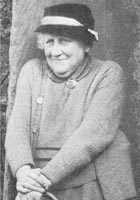

Rotorua, a Maori word meaning literally "second lake", was originally settled by the Maori of the Te Arawa tribe. Rotorua is the heartland of New Zealand Maori culture. Lake Rotorua is the largest of the 16 lakes in the Rotorua district. Mokoia Island is on the lake and for centuries been occupied by various tribes. The lake is a treasure of wildlife, particularly black swans.
There are seven species of swans in the world, all pure white except for the Australian black swan and the South American black-necked swan. The black swan was introduced as a game bird from Australia to New Zealand in the 1860s but also probably reached New Zealand naturally and are considered a native bird.
Sonnets of Edna St. Vincent Millay
From Fatal Interview
"O ailing Love, compose your struggling wing!
Confess you mortal; be content to die.
How better dead, than be this awkward thing
Dragging in dust its feathers of the sky;
Hitching and rearing, plunging beak to loam,
Upturned, disheveled, uttering a weak sound
Less proud than of the gull that rakes the foam,
Less kind than of the hawk that scours the ground.
While yet your awful beauty, even at bay,
Beats off the impious eye, the outstretched hand,
And what your hue or fashion none can say,
Vanish, be fled, leave me a wingless land . . .
Save where one moment down the quiet tide
Fades a white swan, with a black swan beside."
— Edna St Vincent Millay
Edna St. Vincent Millay (February 22, 1892 – October 19, 1950) was an American lyrical poet and playwright. She received the Pulitzer Prize for Poetry in 1923, the third woman to win the award for poetry, and was also known for her feminist activism and her many love affairs.
Mamaroneck, NY, 1914, by Arnold Genthe.
On her death,
The New York Times described her as "an idol of the younger generation during the glorious early days of Greenwich Village...One of the greatest American poets of her time." Thomas Hardy said that America had two great attractions: the skyscraper and the poetry of Edna St. Vincent Millay.


















































